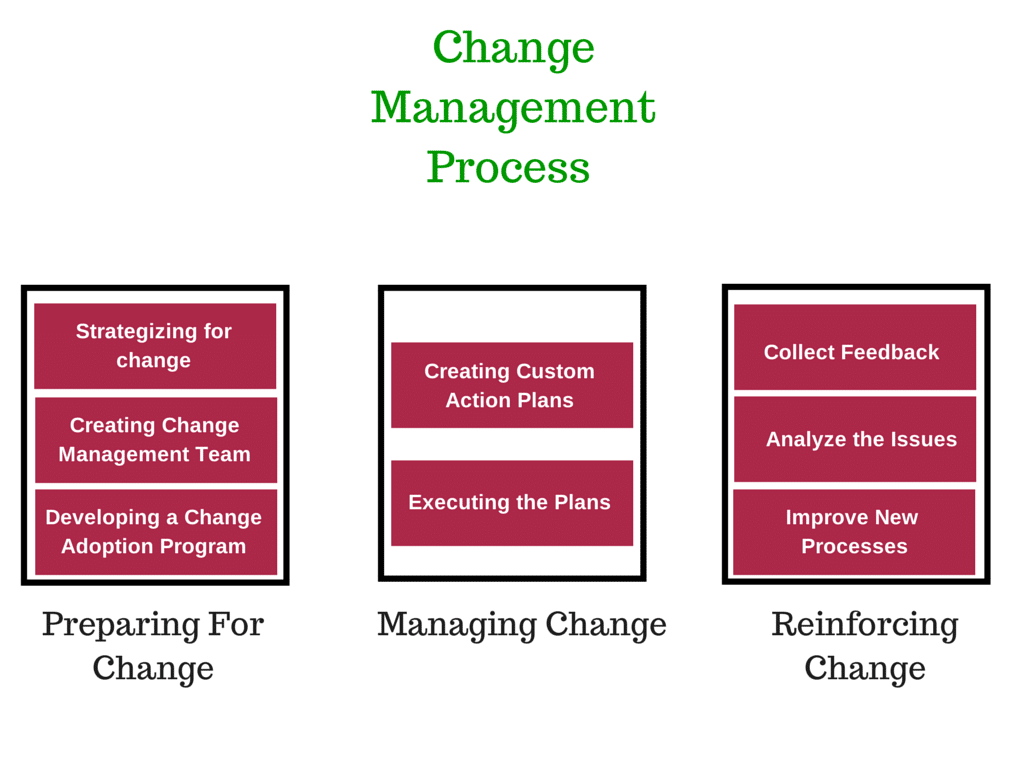 Change management is much maligned and frequently misused. Thanks to the spate of innovations and the epoch of cutting edge technology that is picking pace change is the only thing that is permanent. Everything including legacy systems is becoming obsolete.
Change management is much maligned and frequently misused. Thanks to the spate of innovations and the epoch of cutting edge technology that is picking pace change is the only thing that is permanent. Everything including legacy systems is becoming obsolete.
In the midst of this chaos projects face the prospect of being labeled a failure because of a variety of reasons including lack of foresight and insouciant behavior on part of team members.
The easy concept that is leveraged as a quick getaway is change management or its lack thereof.
WHAT IS CHANGE MANAGEMENT?
There are many definitions of change management accessible on the net. However to put it rather succinctly it is the process by which change is recognized, approved, accommodated and evaluated within an organization.
In the classic sense of the term it is a gradual transitioning of a project and all its attendant processes from a state of turmoil (because of introduced changes) to equilibrium wherein the tangible impact of the imminent change has been evaluated and aspects of it which can actually expedite progress adopted.
Change management is NOT stand-alone singly defined process. It is broad in its scope and implications. It is a framework of assessment techniques, evaluation methods and execution game plans that is used to effectively manage change and prevent any mishaps from occurring as a result.
AN EXAMPLE
Change management is thus a people-centric process. Its ultimate aim is not to improve an existing process but to ensure that the operations carried out before the disruption can be done on a similar level of capability after the alterations being forced by the change are recognized and accepted.
For example within a group setting the introduction of a VoIP system may be an important change that needs to trickle down all the way from the management to the grass root level or the call center employees.
Effective change management is conditioning the users of the legacy telephone system into accepting the newer more convenient features of the Voice over IP platform as a positive change. The employees should take to using the system with ease and thus the progress of any ongoing project is not hampered due to lack of communication or difficulty in documenting information.
THE CHANGE MANAGEMENT PROCESS
The methodology has been described by Prosci and is globally recognized as the 3 phase change management process.
PHASE 1: PREPARING FOR CHANGE
This involves identifying a set of practices that can be leveraged to combat change within the organization. These practices are generally in alignment with the vision and objectives of the enterprise. It further mandates the assembling of a contingent change management team and a “sponsorship” program which acclimatizes the management with the impact left by the change so that the example can be rotated throughout the company as encouragement and precedent.
PHASE 2: MANAGING CHANGE
This phase is a lot more practical and action oriented. It involves drawing up implementation plans that are tailored to the specific change. Changes may be social, economic, legal or technical in nature. While phase 1 defines the broad guidelines to tackle change, phase 2 is all about drilling down and creating a step by step blueprint that can transition the human resource from the present state to the state of compliant acceptance of the change.
PHASE 3: REINFORCING CHANGE
The last phase ensures that the implemented change is self-sustaining and without glitches. In phase 3 it is the duty of the change management team to collect feedback from the stakeholders affected by the change, diagnose gaps, counsel possible resistance to adoption of new techniques and finally improve altered process born as a result of the change adoption program.
Change management is still in its nascent stage and will grow over the coming decades. An organization without a change management plan is one that is not equipped to handle the 21st century market.
Learn about other project management concepts in the Project Management Glossary.





